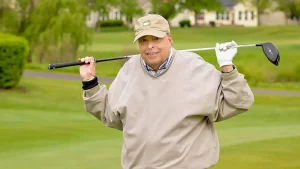Rural Americans with early-onset Alzheimer’s disease are less likely than city dwellers to see a specialist and undergo tests that can help them and their families manage, new research reveals.
While most Alzheimer’s patients are over 65, about 6% develop the disease between the ages of 30 and 65. Typically, their mental decline is faster and more pronounced than that of older folks.
“These people are young — in their 50s and early 60s — and many are still the major family caregivers to older family members and children. They’re still working, paying mortgages and living active lives,” said researcher Wendy Yi Xu, an associate professor in the College of Public Health at Ohio State University.
“If you’re able to diagnose it early enough, the patients and the family members can prepare, make financial arrangements, plan important events and seek the support they need, which can improve the quality of life for all involved,” Xu said in a university news release.
Her team’s new study of more than 8,400 people with early-onset dementias found that those in rural areas were more likely to see only a primary care doctor, instead of a clinical psychologist.
They were also less likely to undergo neuropsychological testing, which helps doctors diagnose and treat the disease and keep tabs on its progression, the study found.
Timely care from a specialist can help early-onset patients and their families make important decisions about work, living arrangements and other issues, Xu said.
The findings were published Aug. 5 in JAMA Network Open.
“Specialty care, including neuropsychological assessments, are pretty critical for people with dementia to get an accurate diagnosis and set a symptom management plan,” Xu said. “These are advanced, complex tests that most primary care physicians are not trained to perform.”
The assessments are crucial because they help pinpoint potential reasons for changes in mental functioning. They evaluate thinking and language skills, reasoning, sensory perception and other measures of learning and understanding.
While there are few treatments for Alzheimer’s and no known cure, managing behavioral and psychological symptoms can allow patients to remain at home and in the community for longer periods.
Xu said relying solely on general practitioners and nurse practitioners who lack specialized training leaves rural patients at a disadvantage. It also adds to demands on providers in understaffed practices.
Worldwide, the number of people with dementia is expected to triple to more than 152 million by 2050, according to the Alzheimer’s Association. That includes 350,000 new cases a year of early-onset Alzheimer’s.
As the number of diagnoses for younger Alzheimer’s patients goes up, “community health care leaders and policymakers must explore innovative solutions to deliver needed specialty care to early-onset patients,” Xu and her co-authors wrote.
Possible remedies include increasing use of specialist telehealth visits; giving primary care providers more dementia training, and expanding the availability of regular specialist consultations for primary care providers.
More information
The Alzheimer’s Association has more about younger/early-onset Alzheimer’s.
SOURCE: Ohio State University, news release, Aug. 5, 2022
Source: HealthDay
Copyright © 2025 HealthDay. All rights reserved.













-300x200.jpg)



